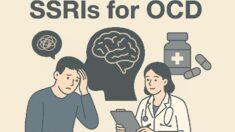
In the world of healthcare, the accurate documentation of medical records is essential for legal evidence, patient care, and administrative purposes. Medical transcription serves as a critical component, converting voice-recorded reports as dictated by physicians and other healthcare professionals into text format. With the constant evolution of technology and the medical field, understanding the nuances of medical transcription is vital for those involved in healthcare documentation. Below, we cover the essentials, delve into the role of transcriptionists, and explore how technology is reshaping this important profession.
Exploring the Essentials of Medical Transcription
The medical transcription process involves transcribing voice-recorded medical reports as dictated by doctors and other healthcare providers. These reports can include patient histories, physical examination findings, operative reports, consultation notes, and more. The transcribed documents become part of a patient’s permanent medical record and are used for billing and insurance claims, making the accuracy of these transcriptions critical.
Any healthcare professional who relies on detailed patient documentation. This understanding ensures the data is correctly captured and formatted, which is crucial for maintaining an efficient healthcare system. Since medical jargon is often complex, transcriptionists must be knowledgeable in medical terminology to provide precise and coherent transcriptions.
Once completed, these transcriptions go through a verification process. Proofreading and reviewing are key steps before the record is finalized to guarantee that the transcription is free of errors and omissions. Considering the implications for patient care and legal integrity, attention to detail is paramount in medical transcription.
The Medical Transcription Process From Audio to Document
The medical transcription process begins with recording a healthcare provider’s dictation. It is often made after patient visits or procedures. These recordings capture observations, diagnoses, treatments, and care plans, and must be clear and concise.
Once received, transcriptionists use specialized software and headphones to transcribe the audio, adjusting speed and clarity as needed. The software often integrates with word processors for efficient, accurate typing. Strong listening and typing skills are essential. Transcriptionists consult medical references and may clarify unclear segments with providers to avoid errors. After transcription, they edit for accuracy, correct typos, and format the document. Some facilities require a second review before the transcript becomes part of the patient’s medical record.
Technologies Revolutionizing Medical Transcription
Technology has dramatically transformed the field of medical transcription. Speech recognition software, for instance, has become more sophisticated, allowing for automated transcription of voice recordings. This innovation can speed up the process, but still requires transcriptionists to review and correct any inaccuracies that the software may produce.
Digital dictation devices have also changed the game by providing higher-quality audio, which makes transcription easier and more accurate. Moreover, the integration of transcription services with Electronic Health Record (EHR) systems streamlines the documentation process, enabling easier access and storage of transcribed reports within a patient’s electronic medical file.
Despite these technological advancements, the human element remains indispensable in medical transcription. Even the best software requires a skilled transcriptionist to oversee its output, ensuring that the final document maintains the high standards of accuracy and reliability crucial for patient care and legal documentation.
Challenges and Best Practices in Medical Transcription
Maintaining patient confidentiality is a primary concern, and transcriptionists must adhere to strict privacy laws like HIPAA. They must also cope with varying accents, dictation styles, and the presence of background noises in audio files, which can hinder the clarity of the recording.
Best practices in medical transcription involve continuous education and training to stay current with medical terminology and changes in healthcare documentation requirements. Quality control measures, like routine audits of transcribed documents, help maintain high standards of accuracy. Transcriptionists should develop strategies to manage their workload efficiently and avoid burnout in this highly detail-oriented occupation.
The importance of networking with peers and participating in professional associations should not be overlooked. Such communities provide valuable resources and support to transcriptionists, including opportunities for professional development and staying informed about industry trends.
Understanding what is medical transcription essential for any healthcare professional who relies on detailed patient documentation.
Medical transcription remains a critical endeavor within the healthcare industry, bridging the gap between oral communication and written records. The dedication and skills of transcriptionists ensure that the quality of patient care is supported through thorough and precise medical documentation. As technology continues to evolve, the field of medical transcription adapts, maintaining its indispensable role in healthcare. It’s the meticulous work of medical transcriptionists that helps to safeguard patient health and the integrity of medical records.


